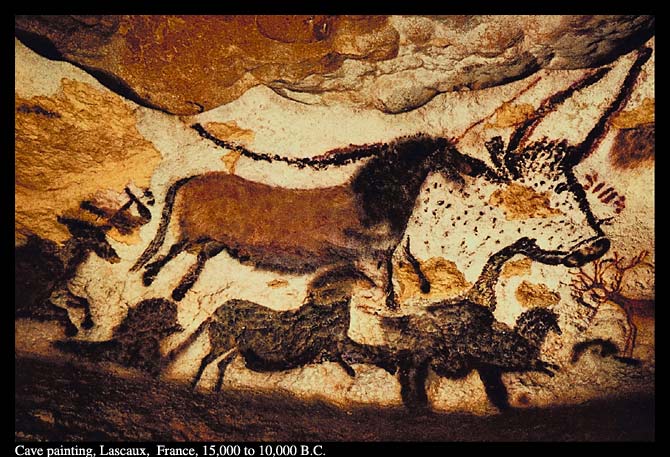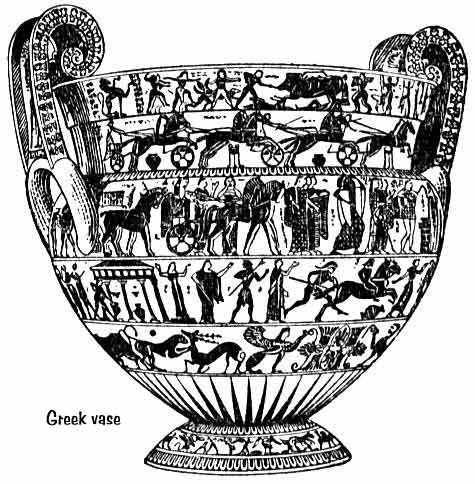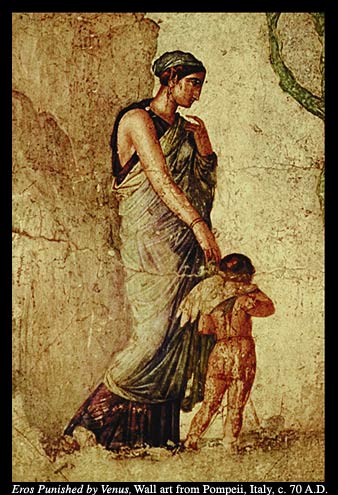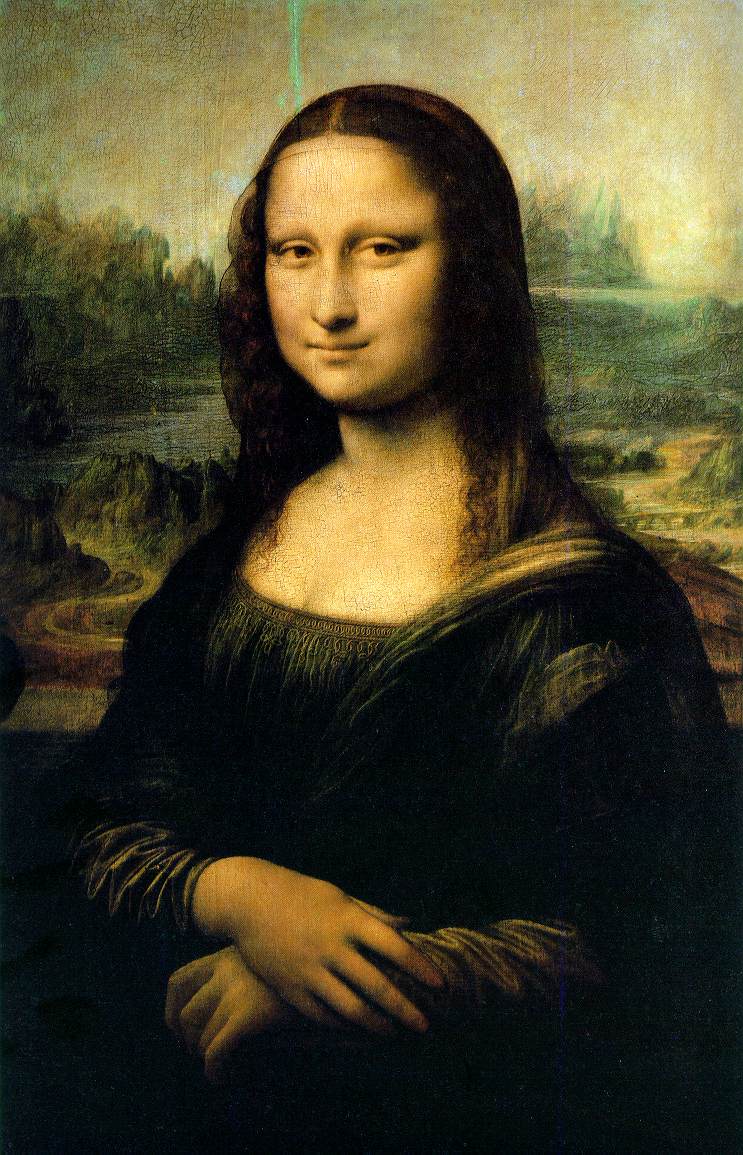Généralités
Art History
This online course will cover the history of visual art from its start in the caves of France to mid-evil times.

Art History
This online course will cover the history of visual art from its start in the caves of France to mid-evil times.


Ancient Art
Explore The Caves of France. You are expected to read the first 3 chapters (A Visit to the Cave, Parietal Art, Archeological Research) and take the quizzes in this section before moving on.
Watch Cave Movie and answer the questions that follow.



Roman art includes the visual arts produced in Ancient Rome, and in the territories of the Roman empire. Major forms of Roman art are architecture, painting, sculpture and mosaic work. Metal-work, coin-die and gem engraving, ivory carvings, figurine glass, pottery, and book illustrations are considered to be 'minor' forms of Roman artwork.

Romanesque art reflected the political and religious climate of the times. Europe was in upheaval, both from invading tribes and among the religions of the time: Catholicism, the Russian Orthodox Church, and Islam. Romanesque buildings had to be designed for defense, so cathedrals were massive in size.
Romanesque cathedrals were also built in the shape of a Latin cross. They were decorated with stone sculptures depicting Biblical scenes. The walls portrayed religious subjects and were painted in fresco, a durable style of painting done on wet plaster.
Most Romanesque painting took the form of church murals and illuminated manuscripts, or books. There are few Romanesque murals left, since they suffered from fading, damp air, dirt and bad restoration. And as peoples tastes changed, they scraped away or replaced old murals with new works. Most of the murals that have survived over the centuries are only fragments.
 GOTHIC
GOTHIChttp://en.wikipedia.org/wiki/Main_Page
International Gothic is a phase of Gothic art which developed in Burgundy, Bohemia, France and northern Italy in the late 14th century and early 15th century.[1] It then spread very widely across Western Europe, hence the name for the period, which was introduced by the French art historian Louis Courajod at the end of the 19th century.[2]
In this period, artists and portable works such as illuminated manuscripts travelled widely around the continent, creating a common aesthetic among the royalty and higher nobility and considerably reducing the variation in national styles among works produced for the courtly elites. The main influences were northern France, the Duchy of Burgundy, the Imperial court in Prague, and Italy. Royal marriages such as that between Richard II of England and Anne of Bohemia also helped to spread the style.
It was initially a style of courtly sophistication, but somewhat more robust versions spread to art commissioned by the emerging mercantile classes and the smaller nobility. In Northern Europe "Late Gothic" continuations of the style, especially in its decorative elements, could still be found until the early 16th century, as no alternative decorative vocabulary emerged to replace it before Renaissance Classicism. Usage of the terms by art historians varies somewhat, with some using the term more restrictively than others.[3] Some art historians feel the term is "in many ways ... not very helpful.. since it tends to skate over both differences and details of transmission."[4]

The Renaissance (from French Renaissance, meaning "rebirth"; Italian: Rinascimento, from re- "again" and nascere "be born")[1] was a cultural movement that spanned roughly the 14th to the 17th century, beginning in Italy in the late Middle Ages and later spreading to the rest of Europe. The term is also used more loosely to refer to the historic era, but since the changes of the Renaissance were not uniform, this is a very general use of the term.
As a cultural movement, it encompassed a revival of learning based on classical sources, the development of linear perspective in painting, and gradual but widespread educational reform. Traditionally, this intellectual transformation has resulted in the Renaissance being viewed as a bridge between the Middle Ages and the Modern era. Although the Renaissance saw revolutions in many intellectual pursuits, as well as social and political upheaval, it is perhaps best known for its artistic developments and the contributions of such polymaths as Leonardo da Vinci and Michelangelo, who inspired the term "Renaissance men".[2][3]
There is a general, but not unchallenged, consensus that the Renaissance began in Tuscany in the 14th century.[4] Various theories have been proposed to account for its origins and characteristics, focusing on a variety of factors including the social and civic peculiarities of Florence at the time; its political structure; the patronage of its dominant family, the Medici;[5] and the migration of Greek scholars and texts to Italy following the Fall of Constantinople at the hands of the Ottoman Turks.[6][7][8]
The Renaissance has a long and complex historiography, and there has been much debate among historians as to the usefulness of Renaissance as a term and as a historical age.[9] Some have called into question whether the Renaissance was a cultural "advance" from the Middle Ages, instead seeing it as a period of pessimism and nostalgia for the classical age,[10] while others have instead focused on the continuity between the two eras.[11] Indeed, some have called for an end to the use of the term, which they see as a product of presentism - the use of history to validate and glorify modern ideals.[12] The word Renaissance has also been used to describe other historical and cultural movements, such as the Carolingian Renaissance and the Renaissance of the 12th century.







